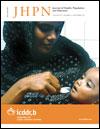Bacteriological Quality of Foods and Water Sold by Vendors and in Restaurants in Nsukka, Enugu State, Nigeria: A Comparative Study of Three Microbiological Methods
DOI:
https://doi.org/10.3329/jhpn.v29i6.9892Keywords:
Coliform, Comparative studies, Escherichia coli, Food contamination, Food hygiene, Klebsiella pneumoniae, Water pollution, NigeriaAbstract
Bacterial count in prepared food or water is a key factor in assessing the quality and safety of food. It also reveals the level of hygiene adopted by food handlers in the course of preparation of such foods. This comparative study evaluated the bacteriological quality of food and water consumed in Nsukka, Enugu state, Nigeria, using three bacteria enumeration methods. Data obtained are assumed to reflect the level of personal and environmental hygiene in the study population. Ten types of foods—beans, yam, abacha, okpa, moimoi, pear, cassava foofoo, rice, agidi, and garri—and 10 water samples were evaluated for bacteriological quality, precisely determining the level of coliform contamination, using the most probable number (MPN), lactose fermentation count (LFC), and Escherichia coli count (ECC) methods. Bacterial counts differed significantly (p<0.05) among the various food samples. However, this did not differ significantly in the three methods used for the enumeration of coliforms, suggesting that any of the three methods could be validly used for such studies with confidence. Escherichia coli and Klebsiella pneumoniae were the two major coliforms identified among 98 coliform isolates obtained from the various food samples, of which 78 (79.6%) were assumed to be of human origin on account of their ability to grow at 44°C. The level of coliform contamination in the food samples from vendors and restaurants (geometric mean count 7.64-9.21; MPN ≥50) were above the accepted 104 colony-forming unit/g or MPN ≤10 limits. The results of the study, therefore, call for stringent supervision and implementation of food-safety practices and regular education on food and personal hygiene among food vendors.
DOI: http://dx.doi.org/10.3329/jhpn.v29i6.9892
JHPN 2011; 29(6): 560-566
Downloads
305
259

